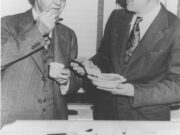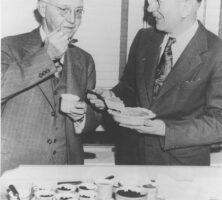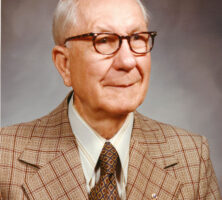Guy Woodroof, a pioneer in food science and technology and often called the “father of food science,” made outstanding scientific and technical contributions to the food industry over the course of his professional career. These ranged from the development of processes and methods for the preservation of fruits and vegetables by freezing and canning to revolutionary techniques for the long-term storage of U.S. military rations. Woodroof’s contributions to this field were made primarily while he was associated with the University of Georgia’s Georgia Experiment Station from 1938 until his retirement in 1967, a period when tremendous worldwide changes in the processing of foods occurred. Much of the technology of fruit, vegetable, and nut handling and processing in use today was developed and improved by Woodroof and his colleagues.
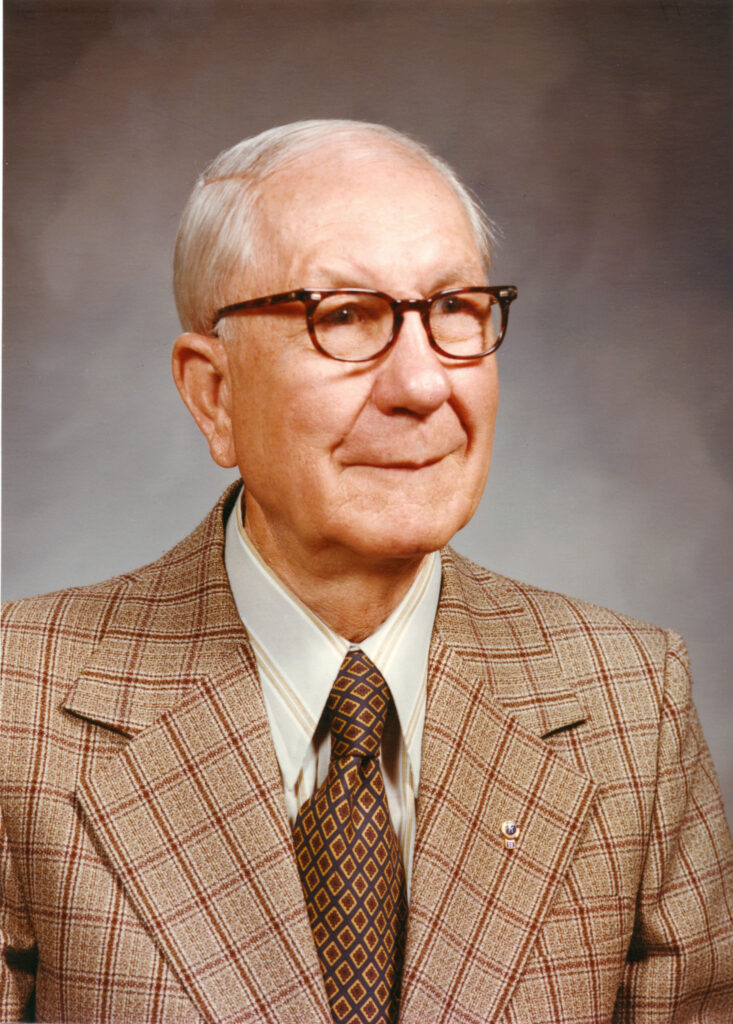
Courtesy of Lawrence Akers
Jasper Guy Woodroof was born on May 23, 1900, on a farm near Mountville, in Meriwether County. He attended a one-teacher school for two years and a three-teacher school for another two years, and he graduated from the six-teacher high school at Woodbury in 1918. He had planned a career in farming and went to the University of Georgia to take a one-year course in agriculture. A professor there encouraged him to enroll as a full-time student, but on October 1 Woodroof and all other able-bodied students were inducted into the army.
Discharged at the end of World War I (1917-18), Woodroof resumed his regular studies at the University of Georgia in 1919. After graduating with a B.S.A. degree in horticulture in 1922, he was employed as a horticulturist at the Georgia Experiment Station near Griffin. At the same time he began graduate studies that led to an M.S.A. in horticulture in 1926. He continued his graduate studies at the Michigan State College of Agriculture and Applied Science (later Michigan State University) and the University of California by taking short leaves of absence devoted to intensive study, and he earned his Ph.D. from Michigan State in 1932.
In 1933 the Abraham Baldwin Agricultural College was organized on the site of the Georgia State College for Men in Tifton, with a strong emphasis on agriculture. Woodroof’s training, experience, and interests in agriculture made him a strong candidate to lead the new institution, and at the age of thirty-three, he became Georgia’s youngest college president. He also became a horticulturist with the U.S. Resettlement Administration, established in 1935 as part of U.S. president Franklin D. Roosevelt’s New Deal to give assistance to families who had lost jobs, savings, and in many cases their homes during the Great Depression. They were to be “resettled” on projects where they could grow food for subsistence and earn income from local industries. Woodroof worked closely with the resettled families, advising them on the selection and methods of growing crops, often spending weeks at a time on projects that were scattered throughout the southern states.
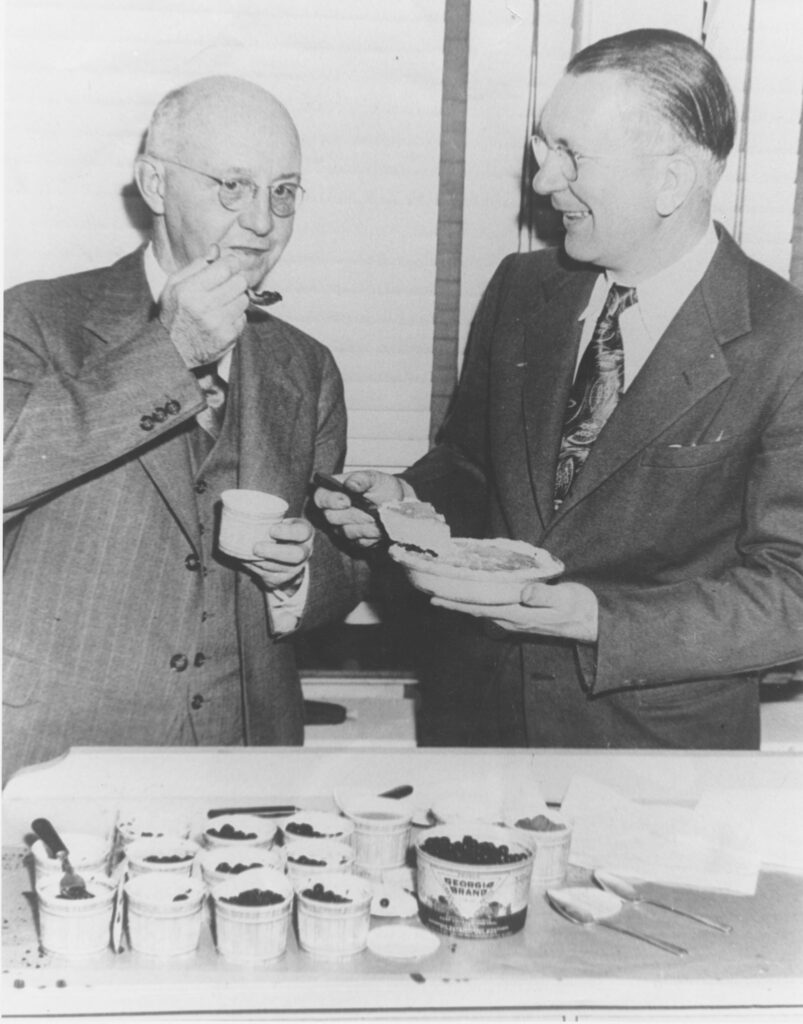
Courtesy of Lawrence Akers
Woodroof returned to the Georgia Experiment Station in 1938 to organize the Department of Food Technology and to direct research programs in food preservation. An early program was sponsored by the Tennessee Valley Authority (TVA) to provide assistance to families displaced by the construction of the TVA dams. The expansion and significance of these programs led to the formation of the Division of Food Science at the University of Georgia, and Woodroof was selected as its first chair. Under his leadership the division offered a balanced curriculum leading to undergraduate and graduate degrees.
Much of Woodroof’s work is summarized in bulletins and more than 300 technical reports, the vast majority of them on food science. He also wrote or edited several books on the production and processing of such commodities as peanuts, coconuts, and tree nuts. In 1987 his autobiography, Dreams of a Food Scientist, was published. He received many awards and honors, among them the Nicholas Appert Medal and the Donald K. Tressler Award from the Institute of Food Technologists, and the Distinguished Service Award from the American Society of Heating, Refrigeration, and Air-Conditioning Engineers (ASHRAE). He was a fellow of the American Association for the Advancement of Science and ASHRAE and became Alumni Distinguished Professor of Food Science at the University of Georgia in 1944.
After retiring from the University of Georgia in 1967 Woodroof continued lecturing, consulting, and studying. He traveled extensively in foreign countries to advise on crop selection and food preservation under the sponsorship of the World Bank, the International Executive Service Corps, and private companies.
Woodroof was active in church and civic affairs, and was named Griffin’s “Man of the Year” in 1975. An endowment fund was established in 1981 to implement the annual Dr. J. G. Woodroof Lecture in the Food Science Division of the University of Georgia.
Woodroof and his wife, Naomi Chapman Woodroof, a noted botanist whom he married in 1926, had three children and several grandchildren and great-grandchildren. He died on November 6, 1998, in Griffin.


